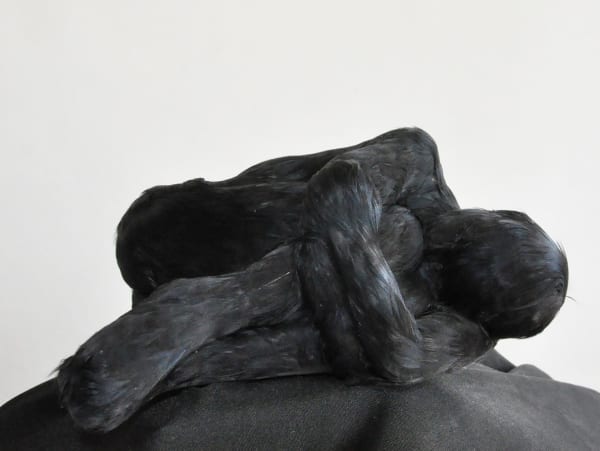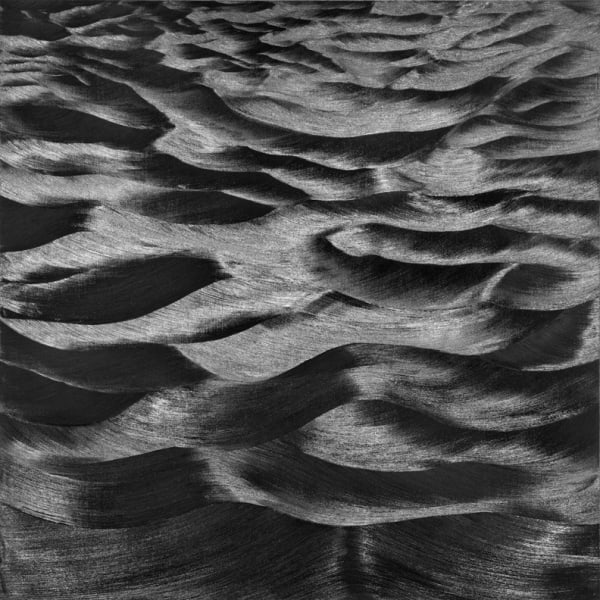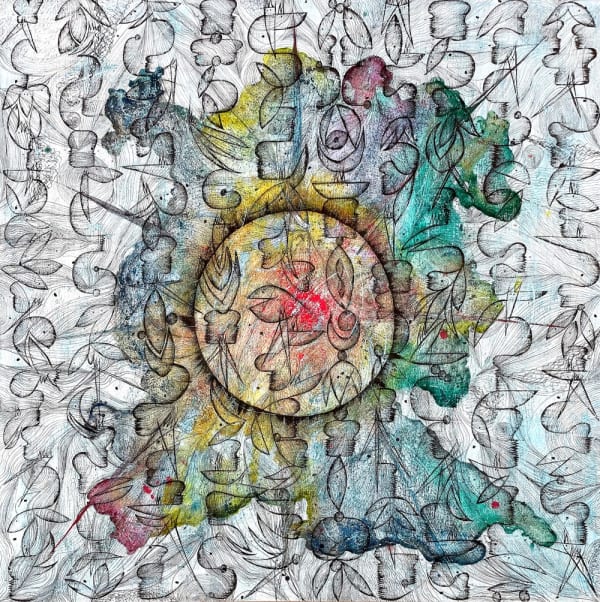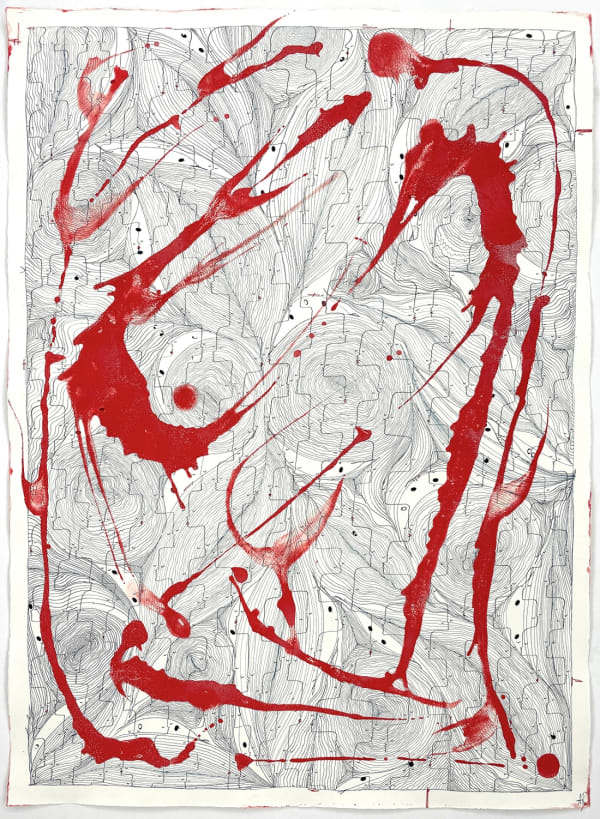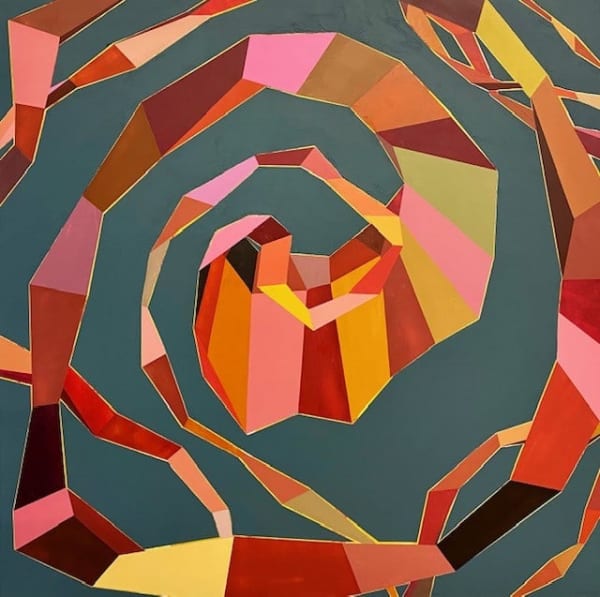This online only exhibition is presented in honor of Women's Month. The selected works highlight women from our roster of contemporary artists and celebrate their many mediums and stylistic techniques. The show includes works from esteemed artists, Lucy Glendinnging, Annina Roescheisen, Iris Kufert-Rivo, Danielle Frankenthal, Karen Gunderson, Sophie Ryder and Hilary Wilder.
This article is in tandem with our current online show, "The Contemporary Female Artist", a curated selection highlighting the skillful, innovative, and experimental techniques and oeuvre of our roster of female artists.
The female presence in the arts, though historically neglected, is one to be celebrated. The first heroine in our story is that of Mary Cassatt, an American painter and printmaker from what is now known as Pittsburgh, Pennsylvania. She spent much of her youth traveling throughout Europe, and after having abandoned her schooling at Pennsylvania Academy of Fine Arts, disgruntled with the academic environment and glass ceiling they presented, she relocated to Paris. At the time, the École des Beaux-Arts was not yet accepting women into their sphere so Cassatt took up private lessons.
In 1868, Mary Cassatt’s Mandolin Player was accepted at the Paris Salon, the prestigious and established exhibition venue. After touring Europe from 1871-1874, Cassatt settled in Paris once again. She lost interest in the Salons, claiming them as too conservative, and critiquing the artists involved as producing works mainly for profit. In 1875, Cassatt came to encounter Degas’ work displayed in a gallery. Having eventually befriended the artist, they became close colleagues and collaborators and in 1877, she was invited to join the Impressionist movement. Being the only American painter in the movement, she participated in 4 of the 8 exhibitions.
Today her work is displayed in many esteemed museums and collections, including the Metropolitan Museum of Art, MoMA, and the National Gallery.
Around 1900, Mary Cassatt added a new subject to her repertory: the young girl seated alone or with a dog. Many of the girls, as in Sara Wearing a Bonnet and Coat, wear elaborate chapeaux. Inspired by seventeenth-century Dutch and Flemish portraits as well as English portraits of the Romantic period, Cassatt updated the genre. While the old master images depicted aristocratic children, Cassatt often drew her models from the families of local servants. Nevertheless, she instilled her sitters with a strong sense of presence and dignity, in keeping with her belief that education and cooperation among women could shape destiny as much as inherited position.
Cassatt’s innovation and determination paved the way for women in the arts; her influence on style and printmaking can be found in the artworks of today’s artists. One such artist comes to the forefront, Karen Gunderson, whose brushstrokes embody a moment and define her work. Gunderson, born in Racine, Wisconsin, has been the subject of numerous one-person shows throughout the United States and in Madrid, Spain and Sophia, Bulgaria. Her Black Paintings series began in the 1980s and creates scenes in which the subject matter becomes completely dependent on light and the brushstroke. It might seem contrary to stress the importance of light when her paintings are black, but light is such an integral part of her art that Karen sometimes declares her medium to be ‘oil on canvas with light’.
Karen Gunderson, in her all black paintings, conjures vast scenes through what critic Gerard McCarthy described in Art in America as “a deft working in surface texture alone.” Over the past eighteen years she has perfected a technique whereby pictorial illusions result from white light reflected off the raised edges of varied brushstrokes. As a result, and as a process, her paintings become incredibly focused on the haptic. She often uses four types of black in her paintings and creates the startling effects with very stiff brushes. The process places Gunderson in a mental space of feeling form with her brush rather than visualizing an image, she is feeling out the contours and shapes through the volume of the paint and her brush. The result is an illusory depiction which moves with the viewer across the room and changes with the angle of light refraction.
Gunderson has received many honors and awards, most notably a Lorenzo Magnifico Prize in Painting at the 2001 Florence Biennale, Italy. She has been named by noted critic Donald Kuspit as one of the New Old Masters and was included in the New Old Masters show at the Abbots Palace in Gdansk, Poland.
In a conversation with light as a stylistic technique, Danielle Frankenthal becomes an imperative figure in the reflection. Much like the work of Karen Gunderson, Frankenthal channels light as a technique for movement and varying color effects. Her work is influenced by light in all its form. She describes light as "the most humanly perceivable form of pure energy which allows us sight". This thesis becomes apparent in her work mainly through her materials of choice, namely paint on transparent Acrylite® layers. This material allows a challenge of foreground and background in composition and creates a slight effect of movement and color variation which changes as one moves around the room or under different lighting conditions. The use of transparent Acrylite® evokes a voyeuristic sensation, peering into her abstract gestural scenes.
To conclude our selection, we draw attention to Annina Roescheisen's emotive and highly gestural body of work. A multimedia German artist, and younger than Gundersen and Frankenthal, her work extends beyond painting and drawing to include photography, sculpture, installation, video and more. Like the other artist's in our selection, her work suggests movement and flow. Roescheisen achieves this effect through her layered ink linework and weight variation. This variable establishes a new perception of light and shadow, depth and movement.
Roescheisen’s work has been exhibited in galleries worldwide, including during the 56th Venice Biennale, at the GAA Foundation in the context of the European Pavilion where her work was shown among artists such as Daniel Buren and Yoko Ono. Since 2012 she is performing in ”Systema Occam” by highly acclaimed French contemporary artist Xavier Veilhan. This performance was shown at the MAMO/ Le Corbusier in Marseille, the Delacroix Museum in Paris, the Hermès Foundation in Paris, and the French Alliance Institute in New York, to name a few. In 2016, Time Out New York named her as one of the top 10 emerging artists to follow. In their 2015 review of her series, “What are You Fishing For”, Wall Street International emphasized “Her “holistic” approach to art allows for a broad spectrum of activities and has seen the artist become an active participator in the human rights field and a collaborator with fellow artists.”
For more information on the works or artists please contact info@modernfineart.com or call us at (212) 717-9100.
-
 Hilary Wilder, Pilaster, 2015
Hilary Wilder, Pilaster, 2015 -
 Lucy Glendinning, Sleeping 2, 2021
Lucy Glendinning, Sleeping 2, 2021 -
 Hilary Wilder, The House and the Swimmer, 2018
Hilary Wilder, The House and the Swimmer, 2018 -
 Karen Gunderson, Baltic Revisited
Karen Gunderson, Baltic Revisited -
 Hilary Wilder, Violet in Rome (Rocks and Bullets), 2019
Hilary Wilder, Violet in Rome (Rocks and Bullets), 2019 -
 Karen Gunderson, Waves off Wellfleet, 2013
Karen Gunderson, Waves off Wellfleet, 2013 -
 Annina Roescheisen, Rutheoroil, 2021
Annina Roescheisen, Rutheoroil, 2021 -
 Annina Roescheisen, Vibrational Strings (222020), 2020
Annina Roescheisen, Vibrational Strings (222020), 2020 -
 Annina Roescheisen, Pantheos, 2021
Annina Roescheisen, Pantheos, 2021 -
 Danielle Frankenthal, Morning Mist, 2022
Danielle Frankenthal, Morning Mist, 2022 -
 Danielle Frankenthal, Sturmaz-1, 2021
Danielle Frankenthal, Sturmaz-1, 2021 -
 Danielle Frankenthal, Pandora's Box, 2014
Danielle Frankenthal, Pandora's Box, 2014 -
 Iris Kufert-Rivo, Broadway, 2020
Iris Kufert-Rivo, Broadway, 2020 -
 Iris Kufert-Rivo, Serendipity, 2021
Iris Kufert-Rivo, Serendipity, 2021 -
 Iris Kufert-Rivo, Exit, 2020
Iris Kufert-Rivo, Exit, 2020 -
 Lucy Glendinning, The Unknown Boy 2 , 2015
Lucy Glendinning, The Unknown Boy 2 , 2015 -
 Lucy Glendinning, The Girl in Her Dreams, 2016
Lucy Glendinning, The Girl in Her Dreams, 2016 -
 Danielle Frankenthal, Tree of Life, 2019
Danielle Frankenthal, Tree of Life, 2019

